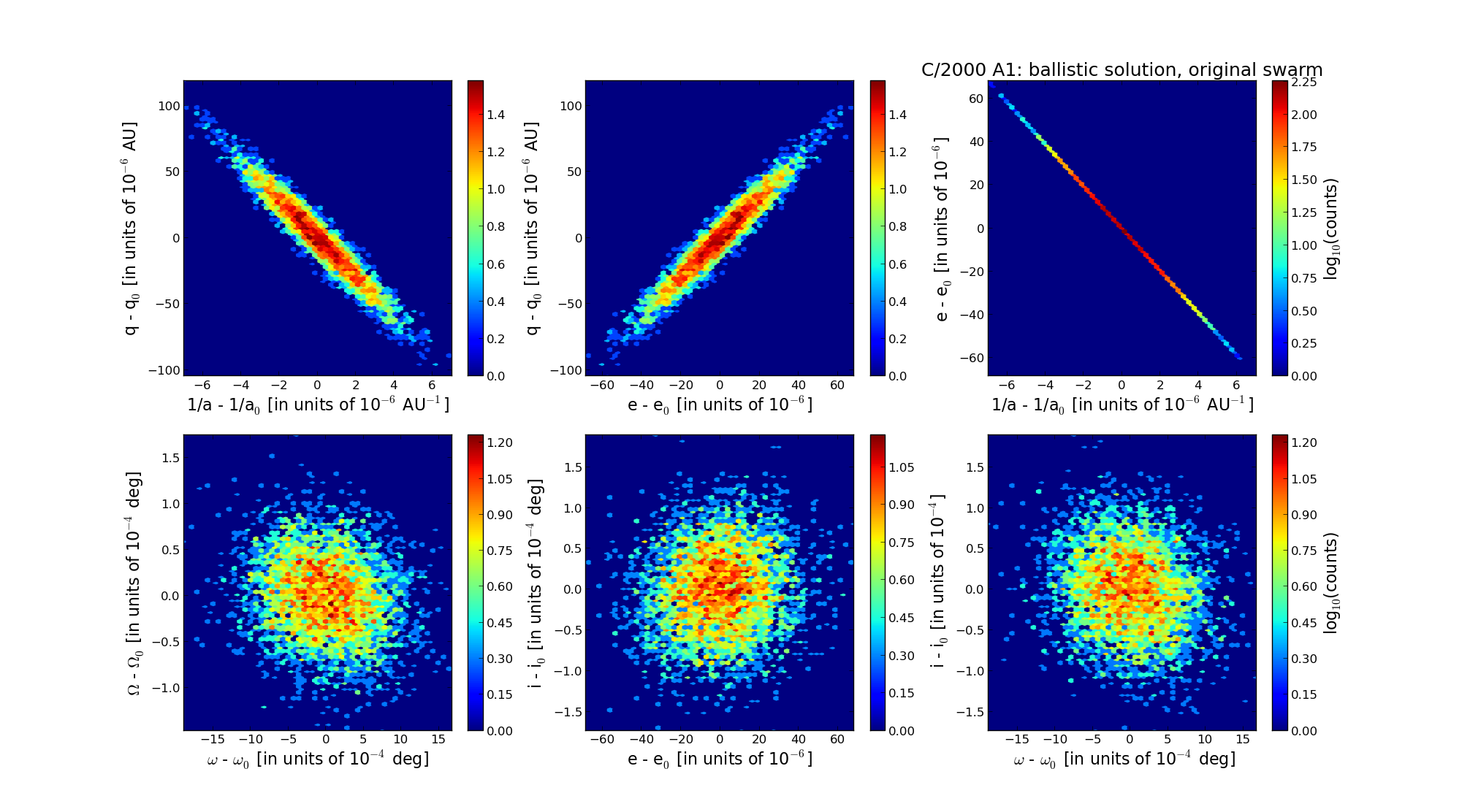| Solar System Dynamics & Planetology Group |
 |
C/2000 A1 Montani |  |
| Solar System Dynamics & Planetology Group |
 |
C/2000 A1 Montani |  |
| number of observations | 132 |
| number of residuals | 264 |
| data interval | 2000 Jan. 4 — 2002 Mar. 20 |
| rms [arcsec] | 0.45 |
| orbit quality class | 1a |
| Epoch (TT) | 20000625.0 | = JD 2451720.5 |
| time of perihelion passage (TT) | 20000713.137414 | ± 0.011178 |
| perihelion distance | 9.74312736 | ± 0.00002922 |
| eccentricity | 1.00388320 | ± 0.00001921 |
| argument of perihelion [deg] | 14.265914 | ± 0.000509 |
| longitude of the ascending node [deg] | 111.835674 | ± 0.000042 |
| inclination [deg] | 24.542798 | ± 0.000049 |
| inverse semimajor axis [10-6 au-1] | -398.56 | ± 1.97 |

| Epoch (TT) | 16861029 | |
| time of perihelion passage (TT) | 20000715.206584 | ± 0.011038 |
| perihelion distance | 9.74094723 | ± 0.00002930 |
| eccentricity | 0.99960423 | ± 0.00001927 |
| argument of perihelion [deg] | 14.342181 | ± 0.000503 |
| longitude of the ascending node [deg] | 111.888001 | ± 0.000041 |
| inclination [deg] | 24.552710 | ± 0.000049 |
| inverse semimajor axis [10-6 au-1] | 40.63 | ± 1.98 |
| Epoch (TT) | 23140908 | |
| time of perihelion passage (TT) | 20000713.185351 | ± 0.011047 |
| perihelion distance | 9.74225531 | ± 0.00002926 |
| eccentricity | 0.99927460 | ± 0.00001927 |
| argument of perihelion [deg] | 14.319745 | ± 0.000504 |
| longitude of the ascending node [deg] | 111.847687 | ± 0.000041 |
| inclination [deg] | 24.549661 | ± 0.000049 |
| inverse semimajor axis [10-6 au-1] | 74.46 | ± 1.98 |